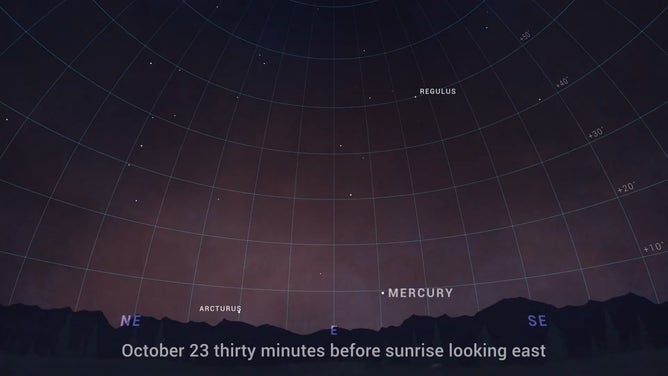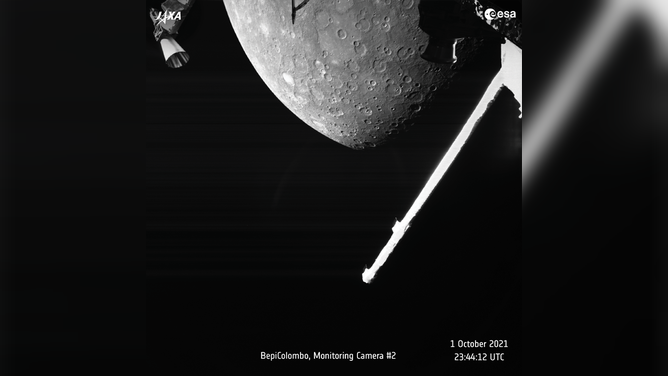Set your alarm and spot Mercury in late October

In the last week of October, Mercury can be glimpsed briefly in the morning sky before sunrise for those with a reasonably clear view of the eastern horizon.
(NASA/JPL-Caltech)
Tiny but might Mercury will be visible in the sky this week, but only if stargazers are prepared to be early risers.
Mercury is so close to the sun that it's often hard to see unless at dawn or twilight.
The elusive smallest planet of our solar system will be visible to the naked eye during the last week of October and early November. Mercury apparition happens when the world is far enough to one side of the moon and becomes visible to Earth. According to EarthSky.org, the astronomy event occurs about six times a year.
Seminole State College planetarium director and astronomer Derek Demeter offered a few tips for spotting Mercury.
He recommends getting up just before sunrise and looking to the east. The best time to see the hot planet will be around 6:30 to 7 a.m. EDT.
Mercury will appear like a star just above the horizon, Demeter said.
"It won't appear to twinkle like the other stars in the sky," he said. "It won't be as bright as Jupiter or Venus but around the same brightness as Saturn."
A star-gazing or astronomy app could also help identify the bright spot along the horizon.
NASA has twice sent spacecraft missions to Mercury, the first, Mariner 10, in 1974 and then again with the Messenger spacecraft in 2004.
The most recent views of Mercury came from the European and Japanese mission, BepiColombo, during a flyby in October. The spacecraft will offer even better images once it completes a series of flybys and enters Mercury orbit in 2025.

The joint European-Japanese BepiColombo mission captured this view of Mercury on 1 October 2021 as the spacecraft flew past the planet for a gravity assist maneuver.
(ESA/JAXA)